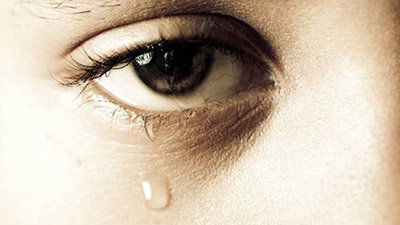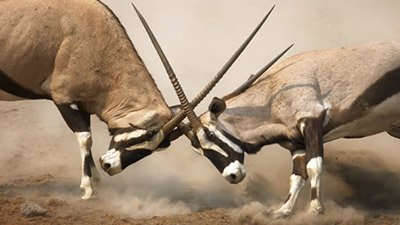
NewScientist: “Cooperative Robots Obey Evolutionary Law”
Robots who “learned” how to share are “the first real confirmation of Hamilton’s rule, one of the most fundamental theories in modern biology.”
News Source
- NewScientist: “Cooperative Robots Obey Evolutionary Law”
- Why Evolution Is True: “New Book Shows that Humans Are Genetically Nice, Ergo Jesus”
Altruistic behavior—helping others at the expense of oneself—flies in the face of the Darwinian “survival of the fittest.” Since both human society and the animal kingdom contain examples of altruistic behavior, evolutionists needed to explain this apparent conflict.
Their explanation was Hamilton’s law, first promulgated in 1964. This basic principle of evolution, called “inclusive fitness theory,” says “that the evolutionary benefits of helping another would outweigh the costs only if the animals were closely related. Specifically, [Hamilton] said the benefit to the other, multiplied by the relatedness of the animals, had to be greater than the cost to the helper.”
Essentially, the idea is that a gene can insure its survival by helping creatures that share that gene. In an evolutionary paradigm, altruism must have an ulterior motive.
About a year ago Nature published “The Evolution of Eusociality,”1 touching off a hot debate that has gotten a bit nasty. In the article, Harvard’s Martin Nowak suggested that Hamilton’s kin selection theory was inadequate. He argued that social change was affected by a variety of group dynamics including, but not limited to, kinship. “The Mathematics of Being Nice”2 summarizes these factors. The article also describes Nowak’s religious beliefs, best described as theistic evolution.
To prove Hamilton’s law, a Swiss robotics lab has simulated genetic diversity in mobile robotic cubes which forage for plastic food to earn points. “The robots then have a choice determined by their software: keep the points they have scored or share them with other robots in the arena.” The robots were programmed to share only with “genetically” similar robots.
Genetic diversity was simulated by varying 33 randomly selected “genes” affecting each robot’s functionality. Mutations and genetic crossovers were programmed into the system. As each robot made the “choice” dictated by its programming, it either kept the points it earned or shared them. The winners in each round were able to pass their “genes” on to the next generation.
The whole thing was then put into a computer simulation and allowed to chug for 500 generations. “Over several generations, a pattern emerged: robots became more likely to share points with another if the two robots were highly related and if the benefit associated with a cost was high.” The “benefit” was determined by the degree of “genetic” similarity.
In essence, the simulation assumed that Hamilton’s law was true, designed a game with Hamiltonian rules, and then declared that the law must be true when the results came out exactly as they were programmed to.
The principle is really simple: if you only help the ones on your own team, then the ones on your team are more likely to advance to the next round. In essence, the simulation assumed that Hamilton’s law was true, designed a game with Hamiltonian rules, and then declared that the law must be true when the results came out exactly as they were programmed to. The project only demonstrated Hamilton’s law; it didn’t confirm anything except the ordinary laws of probability. And the simulation was not designed to include any of the other factors proposed by Nowak’s work.
What’s being examined here isn’t evolution at all, but natural selection. Furthermore, a human being created in the image of God is much more than a sum of his genes and the ions sloshing in his neurons. There is a spiritual side to every person, and that spiritual side is dominated by a sinful nature. The sinful nature makes people inherently selfish, and the God-given conscience provides an impetus for genuinely altruistic behavior. Ultimately, if a person receives salvation from Jesus Christ, a new nature begins to battle with the old. And all of this goes way beyond genetics, kinship selection, and group dynamics.
For More Information: Get Answers
Remember, if you see a news story that might merit some attention, let us know about it! (Note: if the story originates from the Associated Press, FOX News, MSNBC, the New York Times, or another major national media outlet, we will most likely have already heard about it.) And thanks to all of our readers who have submitted great news tips to us. If you didn’t catch all the latest News to Know, why not take a look to see what you’ve missed?
(Please note that links will take you directly to the source. Answers in Genesis is not responsible for content on the websites to which we refer. For more information, please see our Privacy Policy.)
Footnotes
- Martin A. Nowak, Corina E. Tarnita, and Edward O. Wilson, “The Evolution of Eusociality,” Nature 466 (August 26, 2010): 1057–1062, doi:10.1038/nature09205.
- Michael Marshall, “The Mathematics of Being Nice,” New Scientist, March 16, 2011, https://www.newscientist.com/article/mg20928045.200-the-mathematics-of-being-nice/.
Recommended Resources

Answers in Genesis is an apologetics ministry, dedicated to helping Christians defend their faith and proclaim the good news of Jesus Christ.
- Customer Service 800.778.3390
- © 2024 Answers in Genesis





